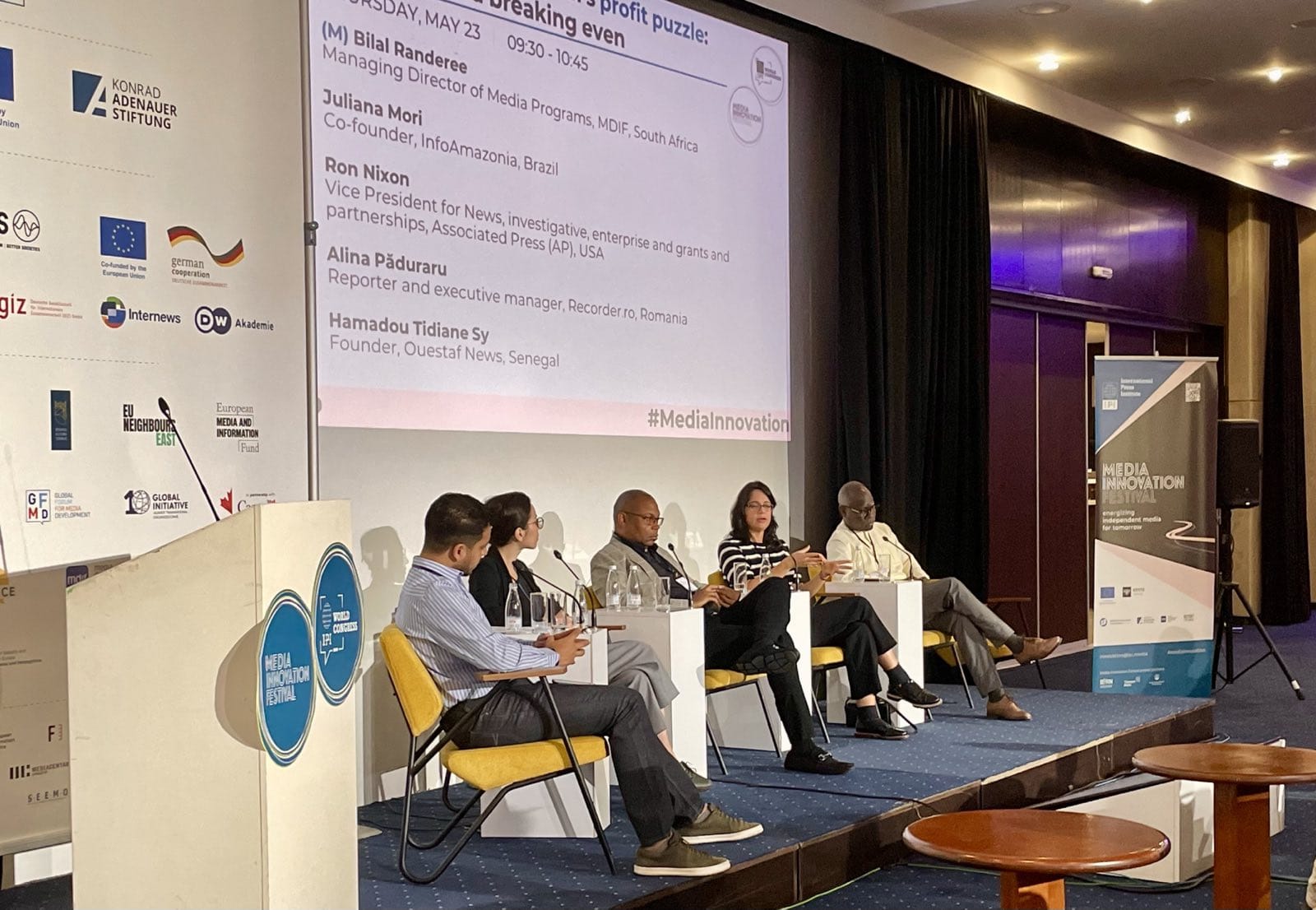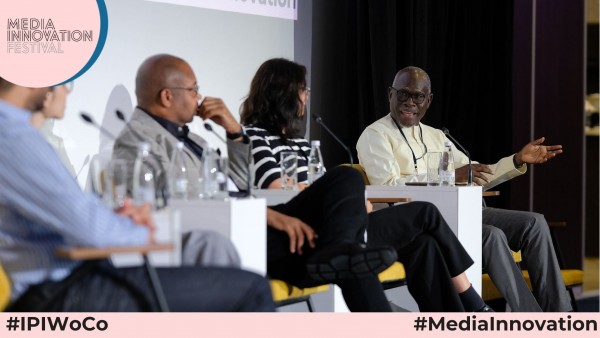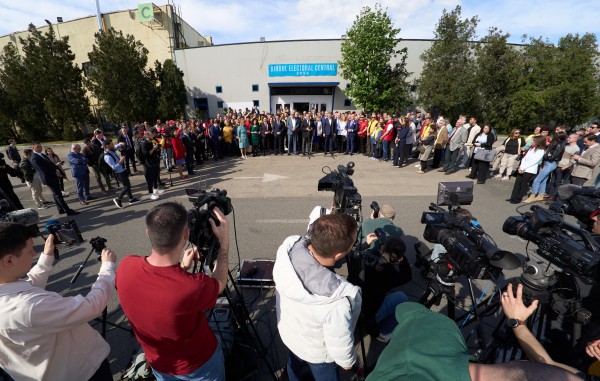The first innovation panel at the 2024 IPI World Congress and Media Innovation Festival, Investigative journalism’s profit puzzle: Going beyond breaking even, kicked off with an important question: should investigative journalism generate revenue? And, if yes, how?
Moderator Bilal Randeree, Managing Director of Media Programs, MDIF South Africa, addressed this question in the company of four media professionals that are constantly thinking about this issue: Juliana Mori, co-founder of InfoAmazonia (Brazil); Ron Nixon, Vice President for News, investigative, enterprise and grants and partnerships, Associated Press (USA); Alina Păduraru, Reporter and executive manager at Recorder.ro (Romania) and Hamadou Tidiane Sy, founder of Ouestaf News (Senegal).
There was a consensus that, while generating revenue is crucial, the previous models under which journalists could simply create and publish content, and then only wait for an audience to show up and pay, are in the past now.
As Hamadou Tidiane Sy pointed out:
Good journalism doesn’t mean good money. People need to have a business model.
For investigative units in particular, this can mean working as a start-up inside of a larger “mothership”, as Ron Nixon suggested based on his experience at the AP. The point is for journalism to help fund itself, “so that it doesn’t create this pull on the budget”.
Juliana Mori’s experience at InfoAmazonia builds onto that, showing that self-sustainability requires dedicated teams and constant communication between the editorial and commercial departments.
Money should come from diverse sources, but not at the price of independence
For a business model to be sustainable and ensure the team’s capacity to deliver quality investigations, revenue diversification is key. Grants and ads are only two of the many potential sources of money available out there – and media organizations should explore them based on their own resources and needs.
>> Receive our innovation newsletter The Outlook directly in your inbox
Certain technologies, too, can help save or redirect money. “Spatial analysis is the main form for our investigative journalism, and thinking of revenue, this allows us to do a lot of investigative journalism without going on the ground,” said Mori, from InfoAmazonia.
When it comes to choosing revenue streams, independence is of the essence, and some offers by funders and advertisers will have to be refused. “We need to protect our reputation, which is our biggest asset”, said Nixon.
The minute we lose independence, it is not journalism anymore
– Hamadou Tidiane Sy
Recorder.ro, the Romanian investigative outlet that has managed to turn audience donations into its main source of revenue, places trust and reputation at the forefront as well. Because of this, “we are extremely transparent. We publish annual reports documenting the money we get through every revenue stream and explain what we did with that money”, said executive manager Alina Păduraru. “Our audience likes this, and when we publish the reports we have donation peaks.”
It’s okay for media organizations to borrow business strategies from one another
Still on the point of diversifying revenue, Păduraru suggests that media organizations “stay humble and not try to reinvent the wheel”. Over the years, Recorder.ro has even drawn inspiration from fundraising calls put out by charity NGOs.
Investigative teams can also look closer to home: “Small independent media try to look at each other as competition,” said Bilal Randeree. “But we cannot be strong in isolation”. The competition is on the outside rather than the inside of the media ecosystem, so journalists from different outlets should ideate together.
When you start collaborating the list of benefits is endless.
>> Watch the innovation panels live on IPI’s YouTube channel.




